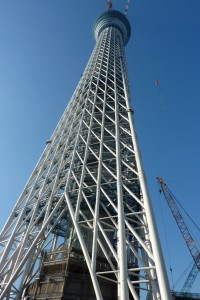By Rueben thestar.com.my
The world’s tallest tower and Japan’s biggest new landmark, the Tokyo Skytree, opened to the public last Tuesday.

It is only second to the world’s tallest structure, Dubai’s Burj Khalifa, which stands 828 metres. The Tokyo Skytree stands at 634m.
These tall structures are classified under different categories – buildings or skyscrapers and towers, each required to meet a host of specifications to qualify.
By comparison, our own landmark, the Petronas Twin Towers, once the tallest, stands at 452m. In between these are the Taipei 101 in Taiwan (508m) and the World Financial Center, Shanghai (492m).
But, one might understandably ask, why build these in the first place?
Man has always desired to reach the top, be it by building a gigantic ship like the Titanic, the largest aircraft or the tallest structure.
Even in ancient times, we read about people in the city of Babylon who decided to make a name for themselves and started to build a tower so high that it would have its top in the “heavens”.
They called it the “Tower of Babel”. It is said that God confounded their common language so that they could no longer understand each other, they were scattered all over the then world and the building of the tower was left abandoned.
However, today, these mammoth structures, besides bringing fame to the host countries, among others, serve as communication hubs for television and radio, satellite links, tourist attractions with modern features and observatories while also housing luxury hotels, high-end residences and corporate suites.
These tall structures are always changing as technology allows engineers to use stronger materials and innovative designs to build higher while having to withstand a variety of forces such as gravity, people inside, weight of building materials, weather and environmental impact.
As we, humans, aspire to go ever higher, let us hope that our desires will also help us to go forward in our quest for a better life for all. More info












